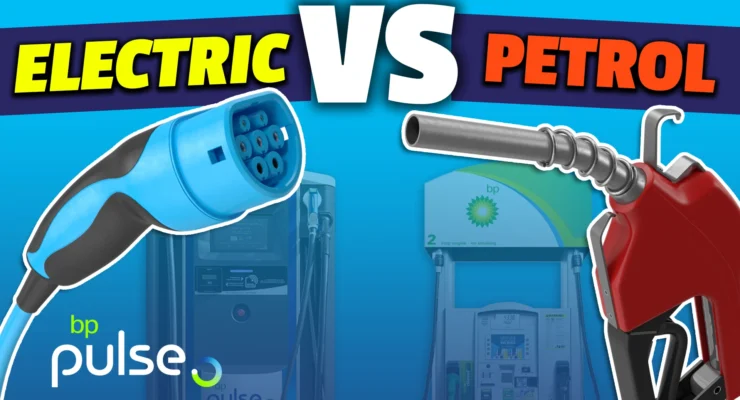
Fast read
BP Pulse, the oil giant's EV charging network in Australia, is rapidly expanding with a goal of 600 charging points by 2025. The move reflects BP's strategic shift toward clean energy amid the growing demand for EV infrastructure. Despite challenges like power supply negotiations, BP Pulse benefits from its existing service station network and partnerships with renewable energy firms. The article provides a quick guide for EV owners on using BP Pulse. Beyond EVs, BP is actively investing in solar, hydrogen, wind, and biodiesel, showcasing a comprehensive commitment to clean energy. BP Pulse's growth signifies a green future for Australia's mobility.
Unlock Australia’s EV Revolution: Exploring BP Pulse Network
In this comprehensive article, we delve into the intriguing transformation of BP Pulse. We will explore the challenges and opportunities surrounding EV charging infrastructure in Australia. We will make sure to provide a practical guide for utilizing BP Pulse stations to power your electric journey. BP Pulse, their dedicated EV charging network, has been rapidly establishing its roots across the country since its launch in late 2022. For decades, BP has been a prominent figure in Australia’s fuel landscape, but the tides of change are apparent as BP, the oil giant synonymous with gasoline and fossil fuels is now leading the way in the electric vehicle (EV) revolution.
BP Pulse: From Gas Pumps to Charging Points
BP Pulse is an ambitious venture by BP, aiming to install 600 charging points across 150-200 locations in Australia by the end of 2025. This transition from traditional fuel stations to a robust EV charging network is a strategic move to adapt to a changing market and secure future growth. The company recognizes the undeniable shift towards electric vehicles, driven by environmental concerns, government incentives, and advancements in EV technology.
Why is BP Pulse Investing in EVs?
The transition to EVs is undeniably underway, driven by factors like environmental concerns, government incentives, and advancements in EV technology. BP recognizes this shift and sees tremendous potential in becoming a leader in the EV charging space. This isn’t just about sustainability; it’s also a strategic move to adapt to a changing market and secure future growth.
Challenges and Opportunities in Rolling Out EV Charging Infrastructure
While BP Pulse’s expansion plans are impressive, rolling out a nationwide EV charging network isn’t without its hurdles. One major challenge is navigating the complexities of securing sufficient power supply, often involving lengthy negotiations with various power companies. Bureaucratic red tape can also pose obstacles, highlighting the need for streamlined regulations and government support to accelerate EV adoption.
Despite these challenges, the opportunities are immense. BP Pulse’s existing network of service stations provides a strategic advantage, allowing for the convenient integration of charging points. Additionally, partnerships with renewable energy companies like Light Source BP ensure cleaner power sources for the network. As EV ownership continues to rise, BP Pulse stands to benefit from increased demand and customer loyalty.
Charging Your EV with BP Pulse: A Practical Guide
So, you’re an EV owner excited to utilize BP Pulse stations? Here’s a quick guide to get you started:
- Locate stations: Download the BP Pulse app to find nearby charging locations, check real-time availability, and view charging speeds.
- Prepare your EV: Ensure your EV has the compatible plug type (CCS2 or CHAdeMO) and bring the charging cable provided with your vehicle.
- Plug and charge: Simply park at a designated charging bay, plug your cable into the station, and follow the app’s instructions to initiate charging.
- Relax and recharge: While your EV refuels, take advantage of the amenities offered at most BP service stations, like coffee shops, restrooms, and Wi-Fi.
- Pay and go: Payment is seamless through the app, offering transparent pricing based on kilowatt-hours consumed.

The Future of EVs in Australia: BP Pulse Leads the Way
With its rapid expansion and strategic partnerships, BP Pulse is undoubtedly playing a pivotal role in shaping Australia’s EV future. This transition signifies a major shift in the energy landscape, one that promises cleaner air, reduced reliance on fossil fuels, and exciting opportunities for innovation and sustainable transportation. As it continues to electrify the nation, one thing is clear: the future of mobility is looking greener, and BP is determined to be at the forefront.
Beyond the Charge: BP’s Commitment to Clean Energy
BP Pulse is just one piece of BP’s broader commitment to clean energy. The company is actively investing in solar power through Light Source BP, exploring clean hydrogen solutions, and venturing into wind and biodiesel production. This diversified approach showcases BP’s genuine dedication to transitioning from an oil giant to a truly integrated energy company, one that embraces a sustainable future.
Conclusion:
BP Pulse’s rapid growth in Australia is a testament to the ever-growing demand for EV charging infrastructure. It also highlights BP’s remarkable shift towards clean energy, solidifying their position as a key player in Australia’s sustainable energy landscape. As the electric vehicle revolution continues to gain momentum, BP Pulse stands tall, leading the way towards a greener and more sustainable future.
For more information:
- Visit the BP Pulse website for more information: https://www.bp.com/en_au/australia/home/products-services/bppulse.html
- Explore clean energy solutions at Your Energy Answers: https://yourenergyanswers.com/


